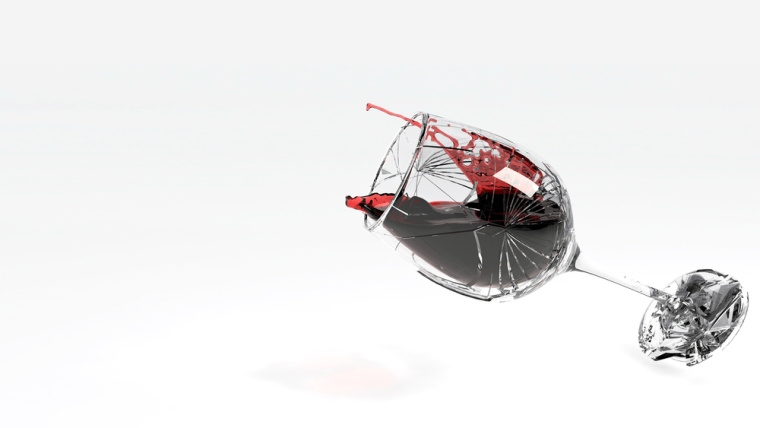
Content supplied by Rabobank
Covid-19 has created massive disruption in the US wine industry – New Zealand’s largest wine export market – resulting in lower total sales and significant revenue losses for some US wineries, according to a new report by agribusiness banking specialist Rabobank.
And with US wine sales via the on-premise channel not expected to return to 2019 levels until after 2021, wine producers selling into the US – including those here in New Zealand – will need to find new ways to engage consumers.
In the report, Wine Quarterly Q2 – Covid -19 and the US premium wine market, Part 1 Rabobank says Covid-19 measures, such as shelter-in-place and lockdown orders, have pummelled the on-premise channel.
“Total sales for US food service and drinking establishments for the first four months of 2020 were down an estimated USD 68 billion or 22 per cent,” RaboResearch senior wine analyst Hayden Higgins said.
“For wine sales, the percentage drop in the on-premise channel will be even higher, given these are more heavily reliant on full-service bars and restaurants, which performed even more poorly than limited-service restaurants.”
Mr Higgins said the US on-premise wine sales channel is small in terms of volume, but very important for access and margins.
“The on-premise channel typically accounts for less than 20 per cent of annual US wine sales, but it’s extremely important, particularly for small, premium wine brands who sell a greater proportion of their product into restaurants and bars,” he said.
“For small premium brands, accessing major retail chains was difficult going into this crisis, and we expect the penetration gap is likely to get worse. Larger wholesalers who have a greater proportion of sales in the off-premise market, as well as more financial muscle, should be better placed to withstand this.”
The report says, barring a vaccine, the US on-premise channel will likely take years to recover.
“Between government enforcement of social distancing measures, the reluctance of some segments of consumers to return on-premise due to fears of contagion, and reduced business and tourism travel, many bars and restaurants may be forced to permanently shut their doors unless a vaccine is made available sooner than most experts expect,” Mr Higgins said.
“Given these, and other, challenges, it’s anticipated the US foodservice industry will likely not return to 2019 levels until after 2021 and that the recovery will be led by limited-service restaurants and take-out/delivery, where there is less consumption of premium wine.”
Implication for Kiwi wine makers
Mr Higgins said for New Zealand wine exporters, the importance of the US market continues to grow.
“New Zealand wine exporters continued to enjoy favourable trading with the US across the early stages of Covid-19 with total wine exports from New Zealand to the US over the period January to May 2020 rising by four per cent in volume and 11 per cent in value (NZD),“ he said.
“Year to date, the US has accounted for 32 per cent and 36 per cent respectively for volume and value of all New Zealand wine exports, making it the largest market on both measures over this period.”
While wine sales into the US remain strong, Mr Higgins said, the struggles of the US onpremise channel would increasingly require New Zealand wine producers to pivot their supply to new channels – a task made particularly difficult by the three-tier US beverage system.
“The US alcoholic beverage market operates under a three-tier system made up of manufacturers in the first tier, a second tier comprised of importers, distributors or wholesalers who purchase the product from the manufacturer, and a third tier of retailers.
“Under this system, New Zealand producers are unable to sell directly to US consumers. And it’s therefore essential New Zealand brands work closely with their US distributors – who are in regular dialogue with retailers – so they can better understand changes in the way US consumers are purchasing wine.”
Mr Higgins said the role of e-commerce should be a core component of any discussions between New Zealand brands and their distributors.
“New Zealand wine producers – and particuarly those who generate a larger proportion of their sales via the US on-premise channel – will need to start thinking more broadly than they have in the past about the role of e-commerce.” he said.
“And in particular they’ll need to consider how e-commerce at the US retail level will evolve, and how distribution partners are preparing for this.”
Mr Higgins said an increased focus on e-commerce would also be wise for New Zealand wine producers, given wine markets across the globe are experiencing similar challenges to the US.
“With on-premise sales likely to be lower moving forward, many wine companies around the world are reaching the conclusion that e-commerce will need to play a more prominent role in their strategy,” he said.
“Once that conclusion is reached, companies then need to ask themselves a series of pragmatic follow-up questions about how to proceed. These questions include how they think about e-commerce within the organisation?, whether they should buy or build an ecommerce team? and where should it sit within the organisation?”
Mr Higgins said Tsingtao, the Chinese beer company, provided one recent example of a beverages company which has used e-commerce to increase sales.
“Tsintao used lockdown measures in China as an opportunity to further create a network of ‘community distributors’ – essentially social media influencers working on commission – that has been extremely successful by a number of measures,” he said.
“Alcoholic beverage brands here in New Zealand and around the world will increasingly need to find new, innovative ways to connect with consumers, wherever they are, in a digital environment and to help drive sales across channels.”
2 Comments
Its not just the US, its global wine markets. See Treasury Estates business update today.
"F20 EBITS has declined against the prior year1 by approximately 21% for the Group, with regional declines of approximately 14% in Asia, 37% in the Americas, 16% in ANZ and 18% in EMEA".
10 years ago i got $2800 a tone for merlot, i see this year the wineries paid $1280 ish.





We welcome your comments below. If you are not already registered, please register to comment.
Remember we welcome robust, respectful and insightful debate. We don't welcome abusive or defamatory comments and will de-register those repeatedly making such comments. Our current comment policy is here.